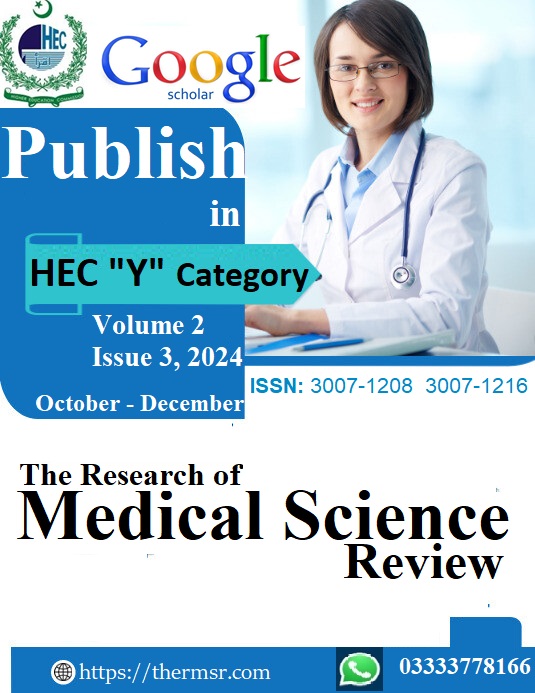DEMOGRAPHIC INSIGHTS INTO HEPATITIS-C VIRUS PREVALENCE AMONG INTERNALLY DISPLACED PERSONS (IDPS) AND NATIVE POPULATIONS OF PUNJAB, PAKISTAN
Keywords:
Hepatitis C Virus (HCV) prevalence, Internally Displaced Persons (IDPs), HCV demographic variables, HCV risk factors, HCV prevention strategiesAbstract
Hepatitis C Virus (HCV) is a blood-borne pathogen responsible for acute and chronic liver infections, which can progress to fibrosis and cirrhosis. With over 185 million individuals infected globally (>3% of the world population), HCV is a significant contributor to global morbidity and mortality. Internally Displaced Persons (IDPs) are particularly vulnerable to communicable diseases such as HCV due to adverse social and environmental conditions. This comparative study evaluated the demographic variables associated with HCV prevalence among IDPs and the native population. One hundred six participants were enrolled, and venous blood samples were analyzed for anti-HCV antibodies using ICT and ELISA methods. Data on HCV-related demographic variables were collected through structured questionnaires. The findings revealed a higher prevalence of HCV among IDPs compared to the native population. Preliminary analysis highlighted associations between HCV prevalence and factors such as illiteracy, low monthly income, inadequate housing, employment status, type of healthcare facility utilized, hospital admissions, and limited access to health education and information. These results underscore the urgent need for targeted preventive measures and improved strategies to mitigate HCV transmission, particularly among vulnerable populations like IDPs.
Downloads
Downloads
Published
Issue
Section
License

This work is licensed under a Creative Commons Attribution-NonCommercial-NoDerivatives 4.0 International License.














